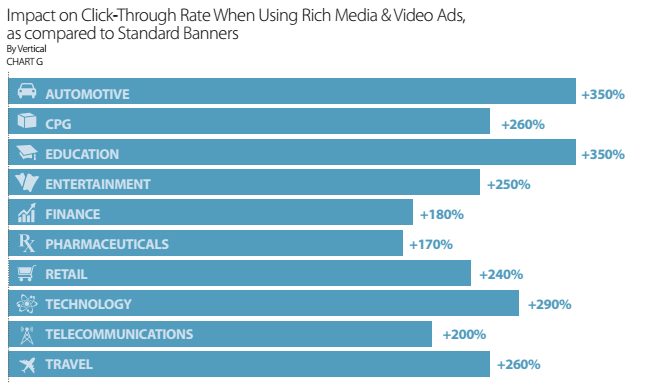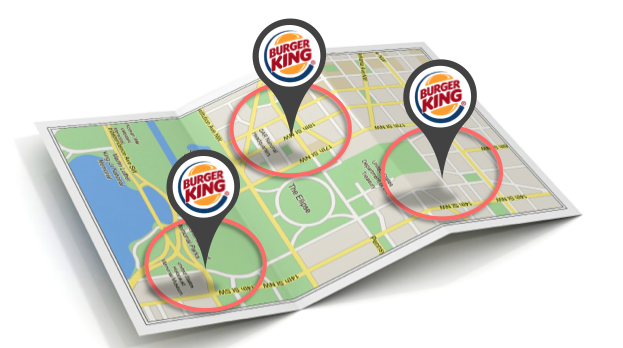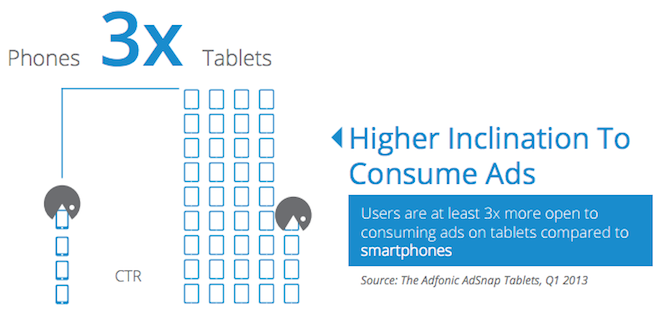For the past five years, every other media channel has consistently lost more and more of its viewership to mobile. As a result, the mobile advertising industry is seeing something of a renaissance, with a massive up-tick in mobile ad spend and exciting new innovations in mobile engagement. Here are a few simple factors you’ll want to keep in mind in order to increase the value and performance of your mobile ad campaigns:
Rich Media Mobile Ads
Leading the charge in this new era of mobile advertising is rich media advertising, categorized as any ad unit that involves multi-media content (video, animation, audio), and/or interactive features that provide mobile engagement beyond simple click-through (mini-games, expandable content, dynamic functionality with swipe/pinch/tilt/shake).
A recent study by Opera Mediaworks reported rich media mobile ads as delivering 4x the click-through rate of standard banners, and Millenial Media reports similar numbers, citing CTR for their rich media ads at 250%-350% that of standard banners.

Image courtesy of Millennial Media
And, when it comes to post-click mobile engagement, rich media experiences like video, interactive retail promotions, and swipe/pinch/tilt/shake were the only ones to see increased consumer action throughout 2013, according to Millenial Media. All other post-click actions saw a drop-off in their conversion rate.

Mobile ad design should be easy-to-absorb, with a clear call to action.
Mobile Ad Design
Ads need to grab consumer attention immediately, but that doesn’t mean they should be visually noisy or embellished. Due to the smaller screen sizes inherent to mobile devices, the best performing ads are visually simple, designed with:
-
Easy-to-read fonts
Brief text
A prominent brand logo
Sparse imagery
A clear call to action
Another feature gaining popularity with modern mobile ads is a clickable “button” integrated into the design. The visual trigger of a button has been shown to increase brand awareness, mobile engagement, and total conversions. Facebook recently incorporated several buttons into their in-app mobile ad templates, and has reported positive results.
Mobile Ad Formats
“The banner ad is dead!” is a fairly common battle cry amongst modern mobile advertisers—though the reality is somewhat less dramatic. Due to their low price point and ease of integration, old-fashioned, static banner ads still account for roughly half of all mobile ad units in play—despite offering a fraction of the CTR compared to all other mobile ad formats.
Interstitial ads, on the other hand—ads that pop up and take over a mobile screen—are virtually impossible to ignore and require the customer to take action. InMobi’s interstitials have a 2-3x higher click-through rates compared to banner ads.
They dominate in terms of overall spending, as well. According to AppFlood, interstitial mobile ads accounted for 70% of mobile ad revenue globally in Q1 2014.
Relevant Context Through Audience Targeting
Effective demographic and Geo-Targeting of a precise mobile audience is perhaps the single biggest determining factor in a mobile ad campaign’s performance. By focusing the reach of a campaign to target only ideal customers, the interest level naturally goes up—as does engagement and click-through.

Businesses can create custom geographic areas within which customers will see a mobile ad
According to Verve Mobile’s “State of the Market Report 2013,” campaigns that utilized properly-sourced targeting data saw an average CTR about 2.5x that of the industry average.
Targeting By Type of Mobile Device
You can tell a lot about a person by on their choice of mobile device: income bracket, personal style—are they more focused on business, multi-media, or social engagement? Audience targeting based on type of device is an easy-to-overlook but extremely important consideration for mobile ad campaigns.
Tablets, for example see an average click-through rate 3x higher than smartphones, according to a recent report from inMobi.

Image courtesy of inMobi
While phones are primarily used during business hours for social and messaging functions, tablets see more use in the evening, when people are at home browsing the web. Combine this more relaxed context with the fact that tablet owners tend to have more disposable income, and it’s easy to understand why the discrepancy in mobile ad performance is so stark.
Targeting By Mobile Service Provider
Different audience segments tend to prefer different carriers. InMobi also reports that iOS users are much more likely to engage with expandible ads, while Android users are twice as likely to click on interstitials.

